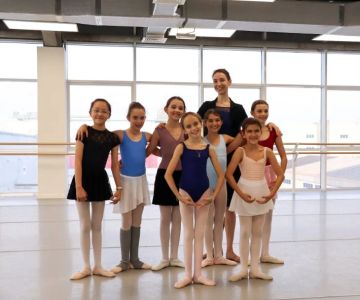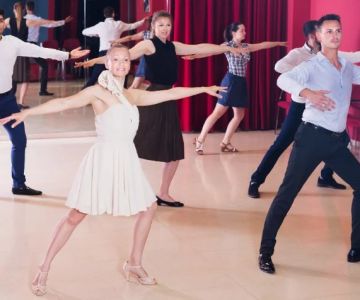1. How School Funding Affects Dance Teams
1.1 A team often caught in the gray zone
The question “do schools fund the dance team” doesn't always have a simple yes or no answer. Unlike traditional athletics like football or basketball, dance teams sometimes fall outside of direct athletic department budgets. Whether a school offers financial support varies widely based on district priorities, location, and how the dance team is categorized — as a sport, performance group, or club.
1.2 Differences across states and districts
In some states, competitive dance is sanctioned by high school athletic associations, which makes them eligible for funding. In others, dance is seen more as a spirit squad or club activity, meaning it often doesn’t receive equal resources. This discrepancy leads to major differences in team quality, travel opportunities, and even basic uniform standards.
2. Understanding What Schools Actually Pay For
2.1 What's usually covered?
In schools that do fund the dance team, budgets may cover things like facility usage, coaches’ stipends, basic uniforms, or local competition entry fees. However, this funding is often minimal and may not stretch far enough to cover choreography, travel, or costume enhancements.
2.2 What’s left out — and why
Many schools, even those that acknowledge dance as part of their official programming, set very limited budgets. With budget constraints and competing interests from academic and athletic departments, funding for arts and dance often takes a back seat. As a result, teams must find alternative ways to stay afloat.
3. When Families and Students Have to Cover Costs
3.1 The out-of-pocket reality
Parents and dancers are often surprised to learn how much they might personally invest. Costs for travel, professional choreography, custom uniforms, music licensing, and competition fees can add up to thousands per year. In some high-profile teams, this level of expense is considered the norm — particularly if the school provides limited funding or none at all.
3.2 The role of booster clubs and family support
Booster clubs are often the lifeline of high-performing dance programs. These parent-run organizations help manage budgets, organize fundraising events, and collect dues. For families unable to afford the high costs, some teams offer payment plans or limited scholarships funded by donations or alumni support.
4. Creative Ways Teams Raise Their Own Funds
4.1 Bake sales and beyond
While the classic bake sale is still a go-to method, many teams have upped their game with creative fundraising. From social media campaigns and sponsorship deals with local businesses to hosting dance clinics or school-wide showcases, teams are finding ways to cover costs while promoting school spirit.
4.2 Real case: One team’s viral success
In 2022, a Texas high school dance team raised over $20,000 by creating a viral TikTok campaign. They posted behind-the-scenes content of their choreography rehearsals and team life, gaining a massive following and attracting sponsors. Their story became a national example of how resourcefulness and visibility can turn limited funding into opportunity.
5. Why School Funding for Dance Matters
5.1 The value beyond performance
Dance teams teach discipline, confidence, teamwork, and physical health. When schools fund the dance team, they invest in more than just performance — they support character building and leadership. Equal funding can also help level the playing field for students who might otherwise be excluded due to financial hardship.
5.2 What schools — and communities — can do
Administrators, parents, and local businesses can work together to elevate the presence and recognition of dance teams. Advocating for their inclusion in athletic budgets, supporting grant applications, or simply showing up to performances can all make a meaningful difference.
For those looking to enhance their school dance program or find the right support tools, American Dance Academy offers curated dance gear, team uniforms, and professional resources to keep your team moving strong — no matter the funding situation.







 Barrington Dance Academy5.0 (22 reviews)
Barrington Dance Academy5.0 (22 reviews) Canyon Concert Ballet4.0 (17 reviews)
Canyon Concert Ballet4.0 (17 reviews) Big City Dance Center LLC4.0 (25 reviews)
Big City Dance Center LLC4.0 (25 reviews) Tye Chua Dance & Kalamazoo Ballet5.0 (18 reviews)
Tye Chua Dance & Kalamazoo Ballet5.0 (18 reviews) Fenton Ballet Theatre4.0 (24 reviews)
Fenton Ballet Theatre4.0 (24 reviews) Front Street Dance Center5.0 (7 reviews)
Front Street Dance Center5.0 (7 reviews) Are There Dances in Middle School? What Students and Parents Should Know
Are There Dances in Middle School? What Students and Parents Should Know How a Dance School in Instagram Builds Community and Success
How a Dance School in Instagram Builds Community and Success Why Do Schools Teach Square Dancing?
Why Do Schools Teach Square Dancing? Why Was Square Dancing Taught in School?
Why Was Square Dancing Taught in School? Why Swing Dance Is Popular for Adults
Why Swing Dance Is Popular for Adults A School Dance: How to Prepare, Shine, and Make It Unforgettable
A School Dance: How to Prepare, Shine, and Make It Unforgettable